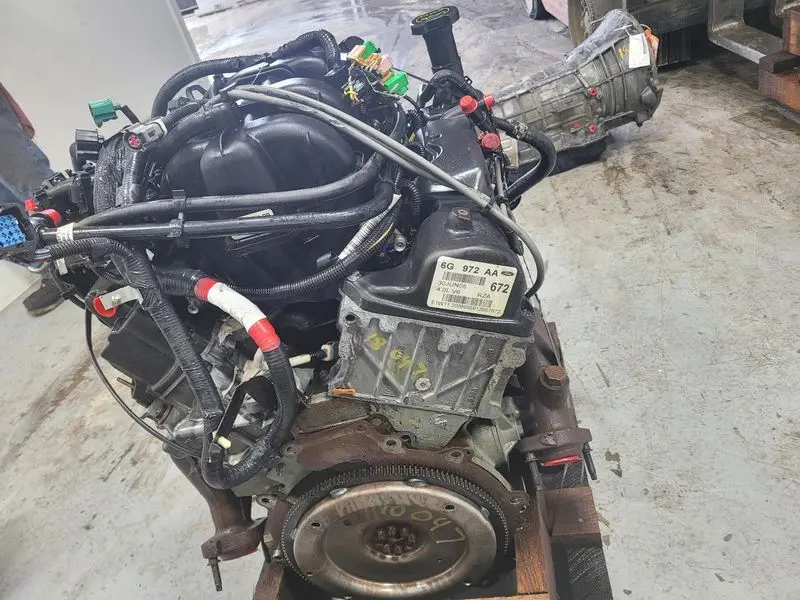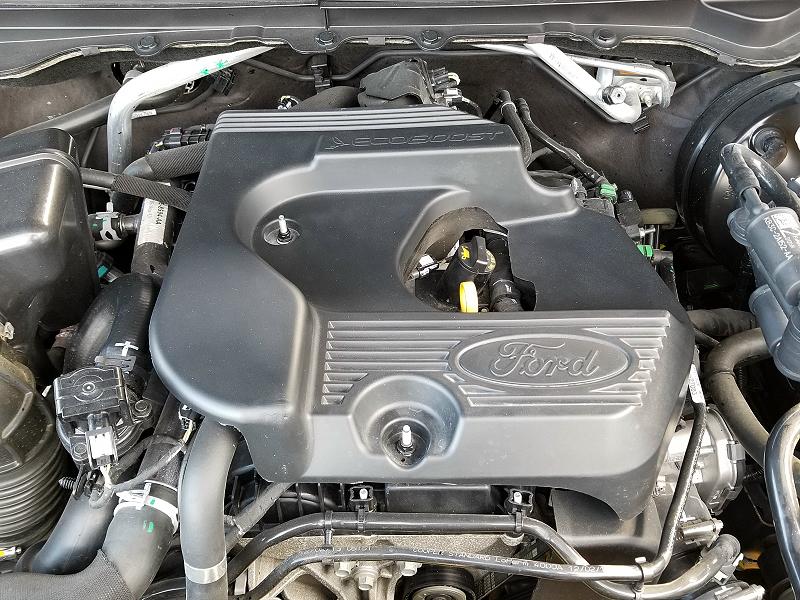How the 2.2 Ford Ranger Engine Stands Out for Durability and Power in Tough Conditions
Recognizing the Basics of Automobile Engines: Features, types, and functions

Overview of Cars And Truck Engines
A vehicle engine works as the heart of a vehicle, converting fuel right into mechanical power to thrust it ahead. This complex system consists of various elements that operate in unison to ensure ideal performance and effectiveness. The basic procedure of a car engine involves the internal combustion process, wherein fuel and air are blended, stired up, and expelled to create power.
The engine's layout can considerably impact its performance, gas effectiveness, and discharges. Key components consist of the cylinder block, pistons, crankshaft, and camshaft, each playing a critical duty in the engine's general feature. The cylinder block houses the cyndrical tubes where burning takes place, while the pistons transform the explosive energy from burning into direct movement. This activity is after that changed right into rotational power by the crankshaft, allowing the vehicle's wheels to turn.
Along with these elements, engines typically utilize numerous systems such as fuel shot, ignition, and cooling down systems to boost efficiency and longevity. Comprehending the standard mechanics of automobile engines is important for diagnosing concerns and doing maintenance, eventually adding to the vehicle's dependability and effectiveness gradually.

Kinds Of Cars And Truck Engines
Cars and truck engines can be categorized right into a number of types based on their layout, gas kind, and operational principles. 2.2 ford ranger engine. The most common categories include inner burning engines (ICE), electric engines, and crossbreed engines
Internal burning engines, which can be more split right into gas and diesel engines, run by igniting a fuel-air combination to create power. Gas engines are normally lighter and smoother, while diesel engines are much more fuel-efficient and deal better torque.
Electric engines utilize electrical energy stored in batteries to power an electric motor, providing immediate torque and absolutely no exhausts throughout procedure. As modern technology advancements, electrical lorries (EVs) are progressively coming to be prominent for their environmental benefits and reduced running prices.
Crossbreed engines integrate aspects of both internal burning and electrical engines, permitting adaptable power sources and improved fuel efficiency. They can operate in various modes, utilizing either the gasoline engine, the electrical motor, or both at the same time.
Each sort of engine has unique benefits and negative aspects, affecting their application in different car kinds and market sections, from small cars and trucks to sturdy vehicles. Recognizing these types is vital for making educated choices concerning vehicle option and efficiency assumptions.
Engine Features Explained
Understanding engine functions is critical for comprehending just how cars operate efficiently. At the core of any inner combustion engine lies the fundamental procedure of converting fuel right into power. This procedure begins with the intake stroke, where a fantastic read air and gas are drawn into the burning chamber. Following this, the compression stroke compresses the air-fuel mixture, boosting its temperature and pressure.
The ignition takes place next, igniting the combination and producing a fast development of gases. This pressure drives the piston down throughout the power stroke, which eventually translates into the rotational motion of the crankshaft. The exhaust stroke after that eliminates the spent gases from the chamber, making method for a new cycle to begin.
In enhancement to these key features, engines also incorporate systems that take care of air conditioning and lubrication, guaranteeing ideal functional temperatures and minimizing rubbing between relocating parts. This intricate interplay of functions enables the engine to create the power necessary for automobile propulsion while keeping efficiency and dependability. Recognizing these features gives important understanding into the intricacies of automotive design and boosts the ability to detect and deal with engine-related issues successfully.
Trick Engine Functions
Engine style encompasses several key attributes that dramatically influence toughness, effectiveness, and performance. One of one of the most important elements is the engine configuration, that includes inline, V-type, and flat styles. Each setup influences the engine's balance, dimension, and power output, consequently impacting total vehicle characteristics.
Another necessary attribute is the engine variation, referring to you could check here the overall volume of all cylinders. Larger variations commonly yield more power however might compromise gas performance. Engine materials likewise play a crucial function; light-weight and high-strength products, such as light weight aluminum and magnesium alloys, enhance performance without including excessive weight.
The type of gas shot system utilized-- such as direct or multi-port injection-- impacts combustion effectiveness and emissions. Turbocharging and turbo charging are features that enhance engine performance by compeling added air into the combustion chamber, raising power output without significantly increasing engine dimension.
Finally, the existence of advanced engine management systems maximizes fuel-air mix and ignition timing, contributing to smoother procedure and much better gas economic situation. Jointly, these attributes define an engine's abilities, setting the structure for its efficiency and durability in a competitive auto landscape.
Maintenance Tips for Engines
Appropriate engine upkeep is crucial for ensuring optimum efficiency and durability, as disregarding regular care can cause substantial concerns down the line. To preserve your engine efficiently, begin with routine oil changes, typically every 3,000 to 7,500 miles, relying on the sort of oil made use of. Fresh oil lubricates engine components, lowering friction and wear.
In addition, keeping an eye on coolant levels is crucial to protect against getting too hot. Make certain that the coolant is topped up and remains in good problem to maintain effective temperature level policy. Frequently change and check air and gas filters, as clogged filters can hinder air flow and fuel delivery, compromising engine visit their website efficiency.
Furthermore, take note of ignition system and ignition systems. Damaged or worn ignition system can bring about misfiring and reduced efficiency. Examining the battery terminals and connections for corrosion is likewise essential, as a weak battery can influence engine starting.

Conclusion
In recap, a thorough understanding of car engines incorporates numerous types, functions, and vital functions that dramatically influence car performance. Internal burning engines, along with hybrid and electrical options, show varied mechanisms for power conversion. 2.2 ford ranger engine. Recognizing the important features, such as intake and exhaust cycles, along with important engine functions like configuration and gas injection systems, equips cars and truck owners with the knowledge necessary for reliable maintenance and procedure, ultimately boosting car long life and effectiveness
A cars and truck engine offers as the heart of an automobile, converting gas right into mechanical power to move it onward. The fundamental procedure of an automobile engine includes the interior combustion process, where fuel and air are mixed, ignited, and expelled to create power.
Routinely inspect and change air and fuel filters, as clogged filters can prevent airflow and fuel distribution, endangering engine efficiency. - 2.2 ford ranger engine
In recap, a detailed understanding of car engines encompasses various types, functions, and key attributes that significantly influence lorry efficiency. Acknowledging the important functions, such as consumption and exhaust cycles, alongside essential engine features like setup and gas shot systems, gears up auto owners with the knowledge essential for reliable maintenance and operation, ultimately improving vehicle long life and effectiveness.